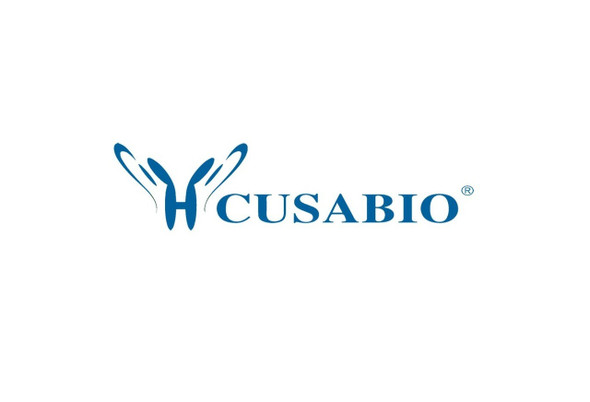Cusabio Human Recombinants
Recombinant Human Haptoglobin (HP) | CSB-EP010691HU
- SKU:
- CSB-EP010691HU
- Availability:
- 13 - 23 Working Days
Description
Recombinant Human Haptoglobin (HP) | CSB-EP010691HU | Cusabio
Alternative Name(s): Alternative name(s): Zonulin
Gene Names: HP
Research Areas: Cardiovascular
Organism: Homo sapiens (Human)
AA Sequence: VDSGNDVTDIADDGCPKPPEIAHGYVEHSVRYQCKNYYKLRTEGDGVYTLNDKKQWINKAVGDKLPECEADDGCPKPPEIAHGYVEHSVRYQCKNYYKLRTEGDGVYTLNNEKQWINKAVGDKLPECEAVCGKPKNPANPVQRILGGHLDAKGSFPWQAKMVSHHNLTTGATLINEQWLLTTAKNLFLNHSENATAKDIAPTLTLYVGKKQLVEIEKVVLHPNYSQVDIGLIKLKQKVSVNERVMPICLPSKDYAEVGRVGYVSGWGRNANFKFTDHLKYVMLPVADQDQCIRHYEGSTVPEKKTPKSPVGVQPILNEHTFCAGMSKYQEDTCYGDAGSAFAVHDLEEDTWYATGILSFDKSCAVAEYGVYVKVTSIQDWVQKTIAEN
Source: E.coli
Tag Info: N-terminal 6xHis-B2M-tagged
Expression Region: 19-406aa
Sequence Info: Full Length of Mature Protein
MW: 57.3 kDa
Purity: Greater than 85% as determined by SDS-PAGE.
Relevance: As a result of hemolysis, hemoglobin is found to accumulate in the kidney and is secreted in the urine. Haptoglobin captures, and combines with free plasma hemoglobin to allow hepatic recycling of heme iron and to prevent kidney damage. Haptoglobin also acts as an Antimicrobial; Antioxidant, has antibacterial activity and plays a role in modulating many aspects of the acute phase response. Hemoglobin/haptoglobin complexes are rapidely cleared by the macrophage CD163 scavenger receptor expressed on the surface of liver Kupfer cells through an endocytic lysosomal degradation pathway.
Reference: "Evolution of haptoglobin: comparison of complementary DNA encoding Hp alpha 1S and Hp alpha 2FS." Brune J.L., Yang F., Barnett D.R., Bowman B.H. Nucleic Acids Res. 12:4531-4538(1984)
Storage: The shelf life is related to many factors, storage state, buffer ingredients, storage temperature and the stability of the protein itself. Generally, the shelf life of liquid form is 6 months at -20?/-80?. The shelf life of lyophilized form is 12 months at -20?/-80?.
Notes: Repeated freezing and thawing is not recommended. Store working aliquots at 4? for up to one week.
Function: As a result of hemolysis, hemoglobin is found to accumulate in the kidney and is secreted in the urine. Haptoglobin captures, and combines with free plasma hemoglobin to allow hepatic recycling of heme iron and to prevent kidney damage. Haptoglobin also acts as an Antimicrobial; Antioxidant, has antibacterial activity and plays a role in modulating many aspects of the acute phase response. Hemoglobin/haptoglobin complexes are rapidely cleared by the macrophage CD163 scavenger receptor expressed on the surface of liver Kupfer cells through an endocytic lysosomal degradation pathway.
Involvement in disease: Anhaptoglobinemia (AHP)
Subcellular Location: Secreted
Protein Families: Peptidase S1 family
Tissue Specificity: Expressed by the liver and secreted in plasma.
Paythway:
Form: Liquid or Lyophilized powder
Buffer: If the delivery form is liquid, the default storage buffer is Tris/PBS-based buffer, 5%-50% glycerol. If the delivery form is lyophilized powder, the buffer before lyophilization is Tris/PBS-based buffer, 6% Trehalose, pH 8.0.
Reconstitution: We recommend that this vial be briefly centrifuged prior to opening to bring the contents to the bottom. Please reconstitute protein in deionized sterile water to a concentration of 0.1-1.0 mg/mL.We recommend to add 5-50% of glycerol (final concentration) and aliquot for long-term storage at -20?/-80?. Our default final concentration of glycerol is 50%. Customers could use it as reference.
Uniprot ID: P00738
HGNC Database Link: HGNC
UniGene Database Link: UniGene
KEGG Database Link: KEGG
STRING Database Link: STRING
OMIM Database Link: OMIM


-SDS__11198.1638524125.jpg?c=1)

-SDS__11198.1638524125.jpg?c=1)




